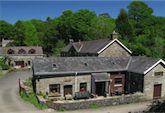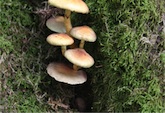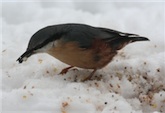The Summer (June, July August) – is Wales’s warmest season with temperatures typically in the region of 10°C to as much as 28°C. The days are long. It is still light at 11pm making it ideal for BBQs.
June
A cold and wet June spoils
the rest of the year
Weather wise, June can be a very unpredictable month. Many people think of June as beginning the best part of the year. Some of the birds sound as if they thought the best time was over already. Robin and mistle thrush are loosing their voices, the thrush’s song has died down to a few dull notes, and the Cuckoo is beginning to say “cuck-cuckoo” in a lazy stammering way, as if singing were no longer worth the trouble. But what a lovely month June is! Days grow longer by two minutes each until the longest day, the 21st, after which they begin to shorten at the same rate. Whatever the birds feel about it, the flowers are in no doubt about June. The stream-side and hayfields are crowded with summer wild flowers, woodland honeysuckle climbs towards the sun, wild roses make the hedges beautiful and the delightful Welsh poppy grows with wild abandon around the cottages. June is probably the best time for spotting butterflies such as the Red Admiral and Peacock (the one with four shining ‘eyes’ on its wings). Goose grass appears in the hedgerows, with its brittle hairy stems and hooks which make it stick to the back of the nearest person you throw it at!
July
Dog Days bright and clear
Indicate a happy year.
The Romans called the period of greatest heat in the year – from about July 3 to August 15 – the Dog Days. They associated the weather with the brightest star in the sky at this time – Sirius, the Dog Star. The opening few days of July can be showery but after that, an anticyclone often covers the country, giving two to four weeks of sunny, sultry weather with generally clear skies. An extended spell of good weather during the Dog Days usually means that the jet stream with its associated depressions and changeable weather is taking a course well north of Britain. Once developed, such a situation tends to last through the summer, giving good weather in Wales well into the autumn and even the winter. However, if the weather has not settled down by the third or fourth week of July, the prolonged fine spells of a traditional good summer are unlikely. At Plas Farm, the fruit on the trees are ripening and beginning to weigh down the branches.
August
If St. Bartholomew’s be clear,
A prosperous autumn comes that year.
The highest temperatures of the year often occur in mid August. The land is at its warmest becauase of the cumulative effects of maximum heating in June – when the overhead sun is at its nearest to Britain – and the warm days of July. The saying says that a fine St Bartholomew’s Day, August 24, sometimes means that the weather is set for a long fine spell with hot, clear and sunny days. Weather for harvesting and fruit picking will be good and farmers will do well. Autumn starts to show the firsts igns of Autumn – watch the thistledown drifting across the fields. See how many kinds of berries you can find ripening. Look out for the Elder tree on the river bank. Country folk say that Elder bloom means that summer is here, and Elder berries ripening show that it is over. Early rises may wish to walk up the mountain to hear the skylark sing as the sun and moon shine face to face for a few moments. August is an interesting time to observe birds who are at their quietest in terms of singing. Some birds stay in pairs all the year round. Some join up in great flocks after nesting time is over. Starlings and tits are already doing this in August. And then our summer visitors begin to leave. The sifts are the first to leave – few will be left by the end of August. Cuckoos are not long after them. Swallows and House Martins are in less of a hurry. Some still have full nests in August. Check for yourself in the cowshed! The second cut of silage is usually made in August.



